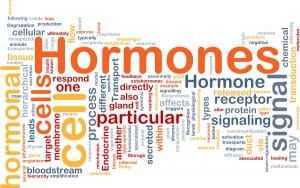It's possible you may not know you have Lyme disease because the typical diagnosis is a "bulls eye" rash, a red rash with another ring of red around it. Many people don't remember being bit by a tick or ever getting such a rash. If you don't have or remember the rash, don't discount the fact that you could have Lyme disease.
If you search the acronym on the Internet , you won't see very many doctors listed, but rather a list of referral sites. These sites can be a good tool to find a doctor, but you must remember to do your own research as well. To make that process a little easier for you, we've listed some top things to look for in a LLMD.
Qualifications
That seems pretty easy, right? Well, yes and no. You're still going to have to do some work. Determining a doctor's qualifications goes beyond what the doctor's office looks like, his specialty, his education and how great the staff is. Those are good things to know, but the main thing you should be considering is how many patients has this doctor effectively treated for Lyme.
There are a few things you can do to find that out. Sometimes doctors will have success stories posted on their websites or social media. Also, remember the "If you never ask, you'll never know" rule? Well, you should try calling the potential doctor's office and ask how they diagnose and treat Lyme disease and if they have a patient advocate to help you better understand the treatments if you have questions. Also, ask if there are any patients that are willing to talk to new patients about their experience.
Education
It's not just what school and residency the doctor went to and what they specialize in, it's really the amount of time a doctor spends learning new information about Lyme disease and possible new diagnosis/treatment options after finishing medical school and residency. What can be startling to know is that essentially none of the current knowledge regarding the diagnosis and treatment of chronic Lyme disease is taught in medical school or in doctor's residency. In fact, an infectious disease doctor is probably the worst bet, as the Infectious Disease Society of America (IDSA) refuses to admit there is such a thing as chronic Lyme disease despite literally thousands of studies stating otherwise. Very few infectious disease doctors are willing to use diagnostic tests other than the standard recommended tests that miss 80-90% of cases or refuse to do treatments that proven to be effective because they are contrary to their society's guidelines.
It really is a shame that so many doctors care more about their reputation amongst their peers rather than doing what is best for the patient. You need a doctor who is not afraid to try new things if a certain protocol isn't working for you. Lyme disease is an exploding pandemic, but clinical research is relatively sparse so your doctor must be a pioneer and actively scour the literature to stay on the cutting-edge for his or her patients. And because its existence by many is being denied, the doctor must have a major drive to function as a detective for their patients and continually seek out new methods of treatments and work as team, with other like-minded physicians, to share information so that you get the very best care.
Lyme disease can be a difficult thing to diagnose and treat, which is why you're seeking a LLMD and not going to your primary care physician. When conducting your search, try to find out how involved the doctors are in obtaining new information, which could be through research, reading articles, attending seminars, etc. You want a doctor that stays up to date on things especially when dealing with such a difficult condition. Also, try searching on reputable sites such as ILADS.org and lymedisease.org (formerly CALDA).
A Physician Who is Innovative
Once you have found a LLMD that is qualified and seeks to continually learns more about the disease, now you have to find out how they diagnosis and treat Lyme disease. This is the part of the process that is going to either help you or hinder you, so you need to make sure that this person has a tremendous amount of experience. You will want to know if your doctor is just using the outdated and proven inaccurate two-tiered approach for diagnosis through standard laboratories such as Quest and LabCorp. This diagnostic protocol that is recommended by the IDSA was actually designed for disease surveillance (spread across the county) and is not appropriate basis to rule-out Lyme disease in a patient because it misses up to 80-90% of chronic cases. This method uses an enzyme immunoassay (EIA) and a western blot test (often if the EIA is negative, no further Lyme testing is done). What we have found is if you happen to even have one band on a standard western blot, it is highly likely Lyme is present. In fact, we have yet to find such a person who didn't ultimately test positive for Lyme disease even when they have one band on the western blot positive.
The one Lyme band most often seen on a Western Blot is the 41 kd band, which is the flagellin (tail) of the spirochete. Borrelia will change the expression of most of its surface proteins in a differential fashion, varying throughout infection according to stage, tissue type, temperature, antibiotics given and the level of dissolved oxygen level. The flagellin protein is, however, expressed to some degree throughout its life cycle. Thus, in many ways it is the most important indicator of exposure or infection, latent or active.
So to sum it up, regardless of other bands on a Western Blot, if you're positive with 41 kda band you most likely have Lyme disease. Many strains of Borrelia burgdorferi and the newly discovered Borrelia miyamotoi will not show-up on any Lyme test at all and the co-infections (each with multiple strains) commonly seen in tick -borne illnesses are very difficult to detect. Thus, LLMD's understand that the diagnosis of Lyme disease is also a clinical diagnosis (based on symptoms). Over time, doctors who see a lot of Lyme patients can consistently pick them out from other fatiguing conditions by just reviewing the patient's history and review of systems (signs and symptoms).
The LLMD will often use indirect physiologic markers often seen with tick-borne illnesses, like Lyme disease and other co-infections, such as babesia, bartonella, anaplasma, mycoplasma, HHV6 and enterovirus. Such tests may include C4a , angiotensin converting enzyme (ACE), VEGF, natural killer cell function and/or number (CD57), and immune activation of coagulation that includes D-dimer, thrombin-anti-thrombin complex, prothrombin fragment 1 & 2 and soluble fibrin monomer, to name a few .
Most LLMD's will typically use two main tests to confirm the diagnosis of tick-borne illness. One being an expanded Western blot by IGeneX, which is a more sensitive and accurate western blot than standard commercial laboratories because it uses more bands that are specific to Lyme and tests for the presence of two different strains of Borrelia burgdorferi, instead of just the one strain used by standard laboratories. Also note that antibiotics given several weeks before testing can further increase antibody production and the sensitivity of the test. Another very useful test for chronic Lyme is the new Lyme culture by Advanced Laboratories. Testing by means of culture is the gold standard because if the organism grows out of the blood, you know it is an active infection.
Finding a Doctor Who is an Expert in Many Medical Fields
Good LLMD's will usually be experts in a wide-range of conditions, because this illness is a multi-system illness. The LLMD must be an expert in endocrinology, immunity, neurology, gastroenterology, hematology and psychiatry, as patients will most often have dysfunctions in all or most of these systems. The evolving medical system is a disincentive for a doctor to function in so many different capacities. More and more, each specialist has a narrow focus in their own area of expertise and refers all other cases to other specialists. So the point is that it may be difficult to find a doctor who has taken the time to really learn all of these specialties and can actually help you. And it's rare to find several different doctors who will collaborate on someone's treatment.
Being a Truly Integrative Physician
The LLMD must usually be an integrative physician that is willing to use both natural therapies to support dysfunctional systems and also a wide-range of medications, including antibiotics, hormones, immune modulators, sleep and pain medications, to name a few. The LLMD must understand the complex life-cycle of Borrelia burgdorferi that includes a cell wall form, a non-cell wall form (L-form) and a cystic form and ultimately the formation of biofilms that are extremely resistant to antibiotics.
While antibiotics are an important component of successful treatment, the sole use of antibiotics will unlikely be successful, and if the wrong antibiotics are given, they can actually make the condition worse (driving the Borrelia into the tissues and increased formation of biofilms). Biofilms are formed when groups of the Borrelia bacteria attach together and often with other organisms and embed themselves in a self-produced matrix of DNA, proteins and polysaccharides, making them generally impervious to antibiotic treatment. Thus, these biofilms need to be broken down to achieve long-term successful treatment of Lyme disease. This is something your doctor also needs to know about and know how to treat with the simultaneous use of multiple antibiotics along with natural and prescription therapies and methods to facilitate the breakdown of the biofilms through oral and intravenous methods.
Understanding the Importance of Immune System Modulation
Your doctor must understand that immune modulation is key to treatment; if the dysfunctional cellular immune system (TH1) and the unregulated hormonal immune system (TH2) causing widespread inflammation is not addressed, the patient will unlikely achieve long-term success. Mitochondrial dysfunction is another key component, so the doctor must address the inability to produce cellular energy (ATP) and be able to optimize thyroid and adrenal dysfunction. The use of a number of therapies are proving to provide significant benefit to Lyme patients, so a LLMD who uses therapies, such as Ozone, ultraviolet blood irradiation, pulsed electrical magnetic field therapy and hyperthermia, is a significant bonus. The doctor must also understand that a wide-range of toxins can contribute to symptoms, including neurotoxins and mycotoxins (from mold), making detoxification an important component.
Dedication to Patient Compassion and Providing the Latest Treatments
The number one thing a LLMD must be is caring! He or she must have compassion and empathy and be willing and dedicated to providing you with the most up-to-date therapies provided in a compassionate manner. He or she must partner with you to regain your health and your life. Lyme is a very complex illness and, unfortunately, is difficult to treat. This illness cannot be treated with the typical 8-15 minute "in and out" visits that are the unfortunate necessity of insurance medicine. Thus, most LLMDs will not take insurance, but will usually give you a superbill to submit to your insurance. Labs and many medications may be covered by insurance.
This search may be time consuming and a little tedious, but it is extremely important. Finding the right doctor is vital to your health so make sure you do your research and see that your doctor has actually earned the title of a Lyme Literate Medical Doctor and not just throwing it around flippantly. We wish you the best of luck in your quest of health.


